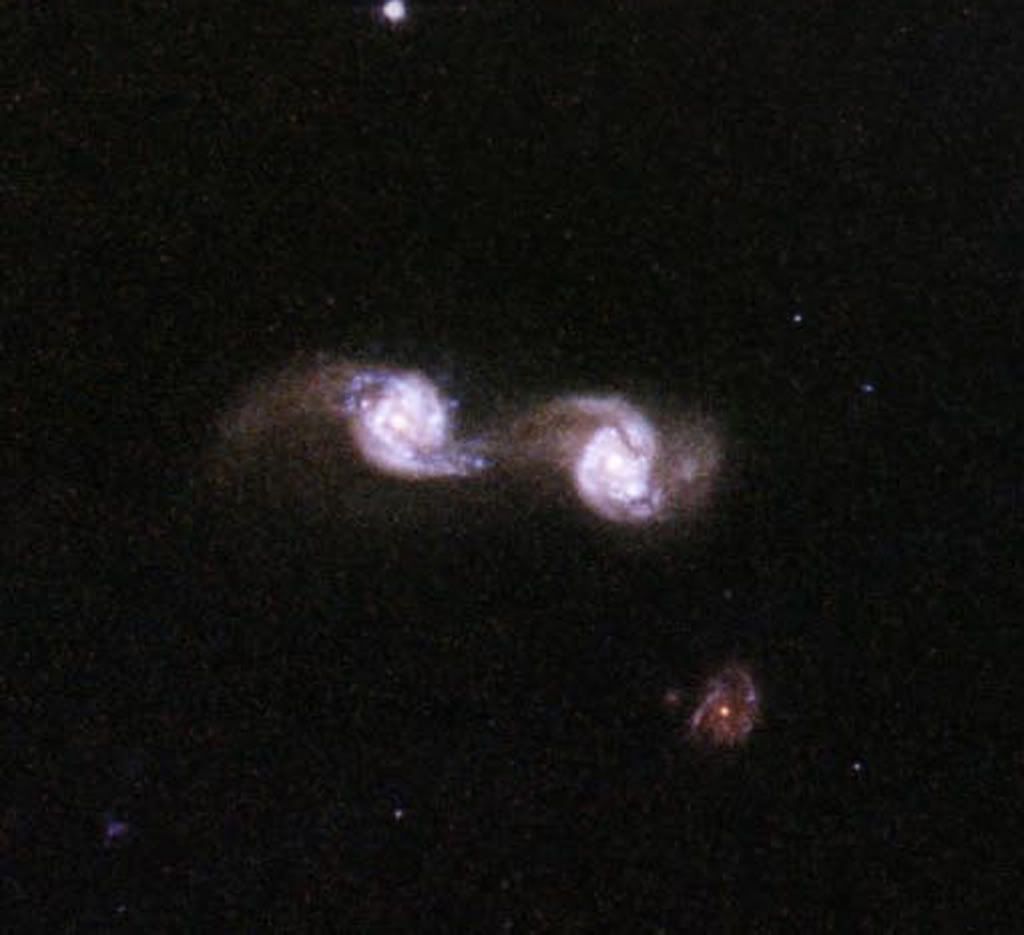Here is the best image of the pair that I have foundgeckzilla wrote:2MASX J12400754-1140015foresthillsbob wrote:Can anyone identify what appears to be a pair of interacting galaxies just below and to the right (see arrow in this picture)?
http://i.imgur.com/BAhnRIO.png
CXOU J124007.15-114001.8
Not much to go on. They aren't studied beyond noting that one exists and the other has an x-ray source within it. Most of these small/distant galaxies are anonymous.
APOD: M104: The Sombrero Galaxy (2015 Feb 05)
Re: APOD: M104: The Sombrero Galaxy (2015 Feb 05)
Re: APOD: M104: The Sombrero Galaxy (2015 Feb 05)
OK...OFFICIALLY my favorite picture!!!! Orion not withstanding...this is just amazing!!!
I don't know if it is the cameras or processes, or lack of filters, or what...but where are the star forming regions???
I think Ann's observation of an Elliptical galaxy that has a ring of dust is interesting...
I also find it interesting that the dust appears to have been blown out from the middle...
Spectacular job!!!!!
:---[===] *
I don't know if it is the cameras or processes, or lack of filters, or what...but where are the star forming regions???
I think Ann's observation of an Elliptical galaxy that has a ring of dust is interesting...
I also find it interesting that the dust appears to have been blown out from the middle...
Spectacular job!!!!!
:---[===] *
Re: APOD: M104: The Sombrero Galaxy (2015 Feb 05)
The last pint I had was about the same as all the others before it. But it was just as good. Think I’ll have another!
Re: APOD: M104: The Sombrero Galaxy (2015 Feb 05)
There are no star forming regions in this galaxy, although there appear to be some stars hot enough to register (weakly) by the now-defunct ultraviolet-detecting space telescope GALEX. Such stars would likely be spectral class A, I think.Boomer12k wrote:OK...OFFICIALLY my favorite picture!!!! Orion not withstanding...this is just amazing!!!
I don't know if it is the cameras or processes, or lack of filters, or what...but where are the star forming regions???
I think Ann's observation of an Elliptical galaxy that has a ring of dust is interesting...
I also find it interesting that the dust appears to have been blown out from the middle...
Spectacular job!!!!!
:---[===] *
There is an interesting article here about M104 being two galaxies in one, one elliptical galaxy and one flat double ring structure not totally unlike the rings of Saturn, except that the one ring is made of stars only and the other one is made of stars and dust.
But that star formation must have ended long ago, and the Sombrero galaxy does not seem to be receiving any substantial new helpings of gas. In any case, its supermassive black hole may heat the gas that is there so that it loses its ability to form stellar nurseries of dense cool dusty gas. This galaxy is on a fast track toward the red and dead stage.http://www.universetoday.com/94800/spit ... es-in-one/ wrote:
Although it might seem that the Sombrero is the result of a collision between two separate galaxies, that’s actually not thought to be the case. Such an event would have destroyed the disk structure that’s seen today; instead, it’s thought that the Sombrero accumulated a lot of extra gas billions of years ago when the Universe was populated with large clouds of gas and dust. The extra gas fell into orbit around the galaxy, eventually spinning into a flattened disk and forming new stars.
Yes, but take a look at those nice background interacting spiral galaxies! They are aglow with brilliant clusters of new stars. I think they look so beautiful. And it is fascinating that they are so similar in appearance too, both in size, structure and apparent stellar populations.
Ann
Color Commentator
Re: APOD: M104: The Sombrero Galaxy (2015 Feb 05)
Like dancing ballerinas acting out M104's swan song
- Chris Peterson
- Abominable Snowman
- Posts: 18595
- Joined: Wed Jan 31, 2007 11:13 pm
- Location: Guffey, Colorado, USA
- Contact:
Re: APOD: M104: The Sombrero Galaxy (2015 Feb 05)
Don't be so sure. It's gravitationally bound to at least one other galaxy, probably several. So eventually it will probably experience a collision or strong interaction, which means a new round of active star formation. Probably better to think of this galaxy as dormant.BMAONE23 wrote:Like dancing ballerinas acting out M104's swan song
Chris
*****************************************
Chris L Peterson
Cloudbait Observatory
https://www.cloudbait.com
*****************************************
Chris L Peterson
Cloudbait Observatory
https://www.cloudbait.com
-
Deathcon
Re: APOD: M104: The Sombrero Galaxy (2015 Feb 05)
I was scanning around the image when I noticed some striking symmetry.
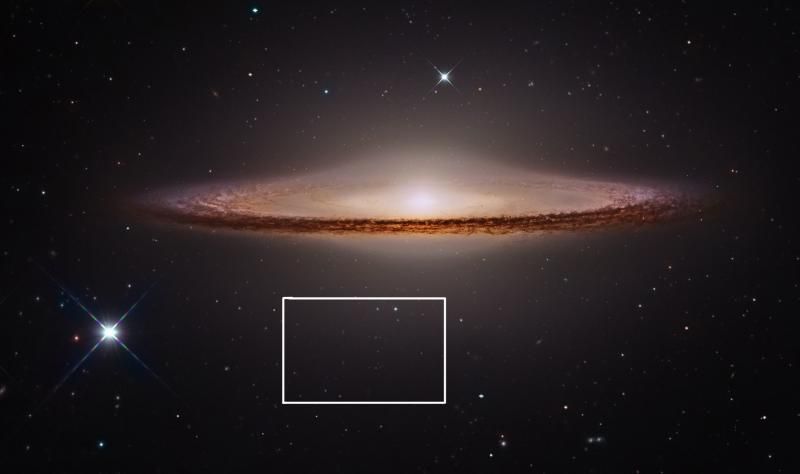
I cropped and broke the image down, as well as sharpened up and adjusted the light levels to see the objects better. The symmetry was even more evident.
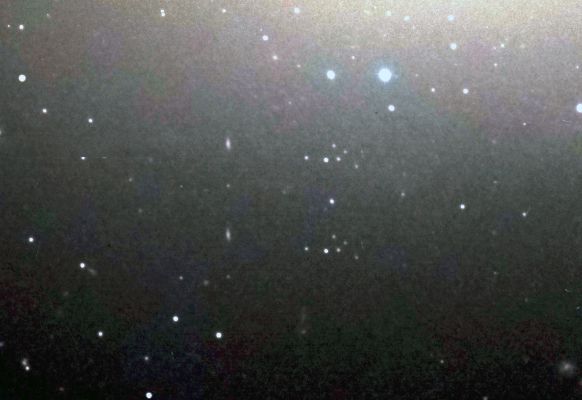
In the next few pictures I made a copy of one side of the supposed symmetry and made it a transparent mask over the original image, which I then color inverted. When I take the transparent mask over either of the two sides the result is a uniform color indicating the two sets of stars are virtually identical in brightness and position from one another.
I made the copy of the bottom group of stars here and placed the mask to the right for comparison.
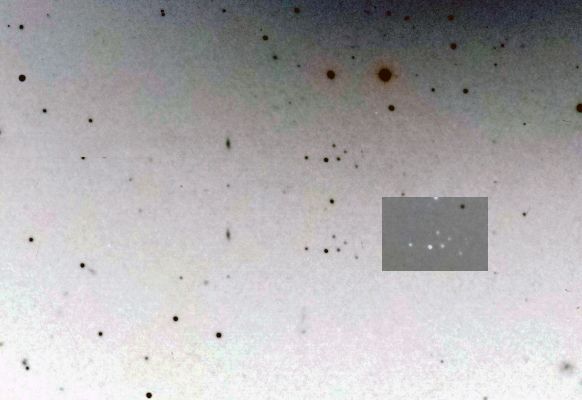
I placed the mask over the same group I copied to illustrate the effect.
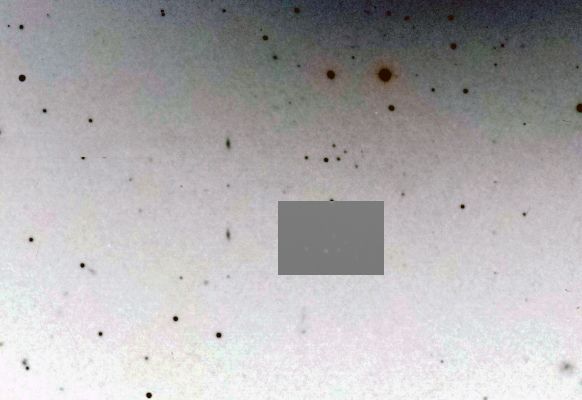
Then placed the mask over the other group, showing it is identical as the first.
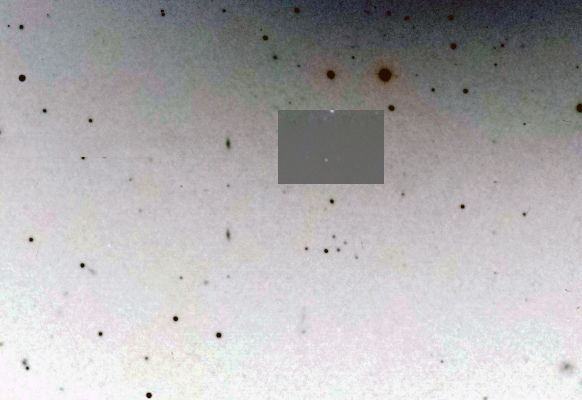
Can anyone try to explain this? Gravitational lensing, or some sort of post-processing mirror artifact?

I cropped and broke the image down, as well as sharpened up and adjusted the light levels to see the objects better. The symmetry was even more evident.

In the next few pictures I made a copy of one side of the supposed symmetry and made it a transparent mask over the original image, which I then color inverted. When I take the transparent mask over either of the two sides the result is a uniform color indicating the two sets of stars are virtually identical in brightness and position from one another.
I made the copy of the bottom group of stars here and placed the mask to the right for comparison.

I placed the mask over the same group I copied to illustrate the effect.

Then placed the mask over the other group, showing it is identical as the first.

Can anyone try to explain this? Gravitational lensing, or some sort of post-processing mirror artifact?
-
rcolombari
- Ensign
- Posts: 43
- Joined: Fri May 24, 2013 11:56 am
Re: APOD: M104: The Sombrero Galaxy (2015 Feb 05)
I would have been really happy to have a more noble version/excuse but unfortunately this is an artifact 
-
fes352
Re: APOD: M104: The Sombrero Galaxy (2015 Feb 05)
The photo shown is a reversed mirror image
-
Patherat
Re: APOD: M104: The Sombrero Galaxy (2015 Feb 05)
What blows my mind is the fact that the stars on the far side of the disk are 50,000 years older then the one's on the near side. What is the measurement that is used to confirm this. Are the stars on the far side measurably shifted to account for their rotation around the axis of the galaxy?
- Chris Peterson
- Abominable Snowman
- Posts: 18595
- Joined: Wed Jan 31, 2007 11:13 pm
- Location: Guffey, Colorado, USA
- Contact:
Re: APOD: M104: The Sombrero Galaxy (2015 Feb 05)
The stars take millions of years to orbit the galaxy. 50,000 years represents much too small a part of that orbit to see in an image of this scale.Patherat wrote: ↑Sat May 05, 2018 4:12 am What blows my mind is the fact that the stars on the far side of the disk are 50,000 years older then the one's on the near side. What is the measurement that is used to confirm this. Are the stars on the far side measurably shifted to account for their rotation around the axis of the galaxy?
Chris
*****************************************
Chris L Peterson
Cloudbait Observatory
https://www.cloudbait.com
*****************************************
Chris L Peterson
Cloudbait Observatory
https://www.cloudbait.com
